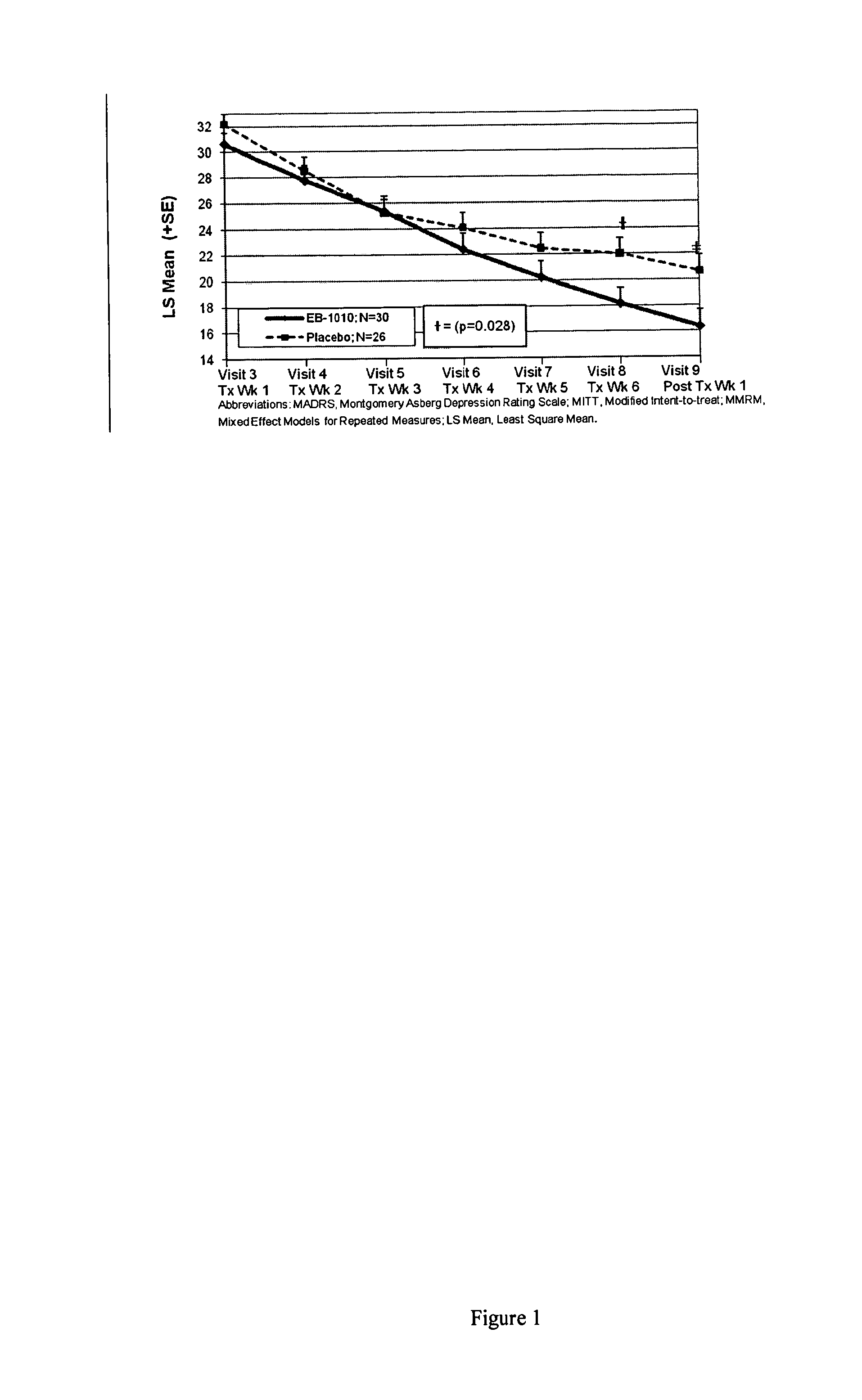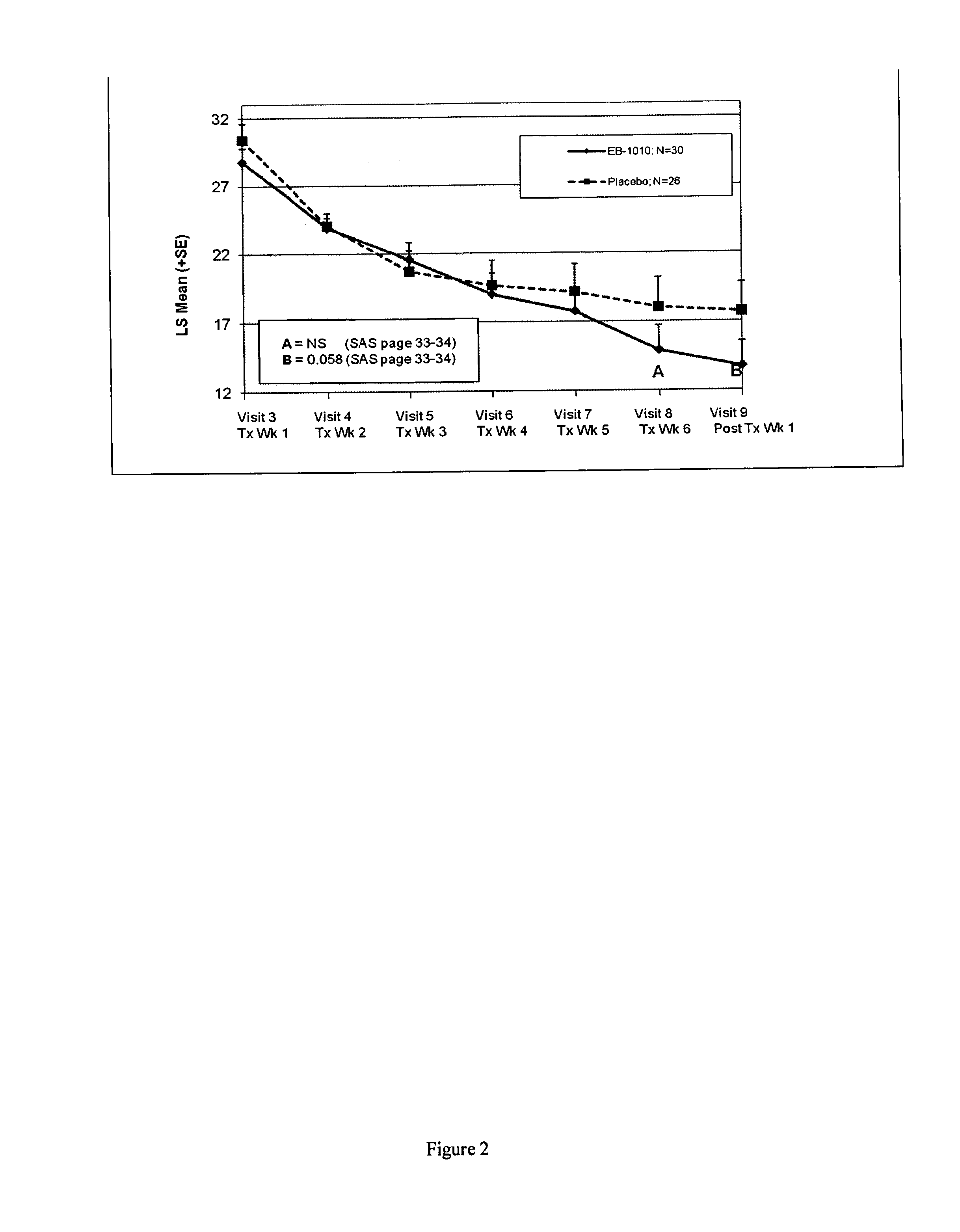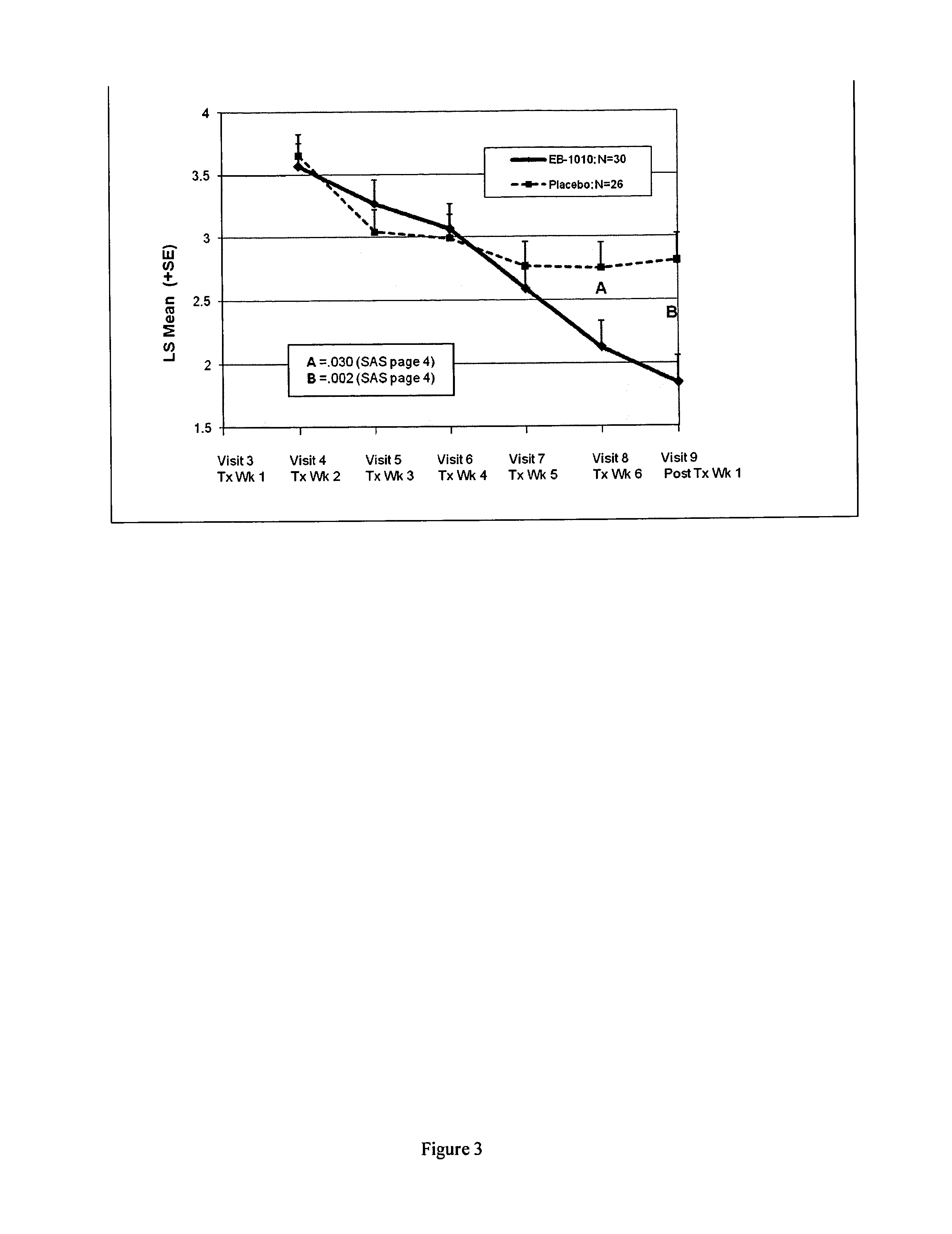Methods For Inhibiting Native And Promiscuous Uptake Of Monoamine Neurotransmitters
a monoamine neurotransmitter and native uptake technology, applied in the field of native and promiscuous uptake inhibition of monoamine neurotransmitters, can solve the problems of limited effectiveness of ssris and snris, limited effectiveness of these approved inhibitors, and consequent effectiveness, so as to inhibit the promiscuous uptake of monoamine transmitters, inhibit native and promiscuous uptake, and increase the extracellular level of monoamine transmitters
- Summary
- Abstract
- Description
- Claims
- Application Information
AI Technical Summary
Benefits of technology
Problems solved by technology
Method used
Image
Examples
example i
Efficacy of (+)-1-(3,4-dichlorophenyl)-3-azabicyclo[3.1.0]hexane in the Treatment of Patients with Major Depressive Disorder
[0191]Subjects were identified who were between the ages of 18-65 (inclusive), and met criteria for Major Depressive Disorder in accordance with the Diagnostic and Statistical manual of Mental Disorders-IV-TR and confirmed by the MINI International Neuropsychiatric Interview. At the screening visit, subjects had a baseline Hamilton Depression Rating Scale (HAMD-17)≧22 and a severity of ≧2 on item 1 and a rating on the Hamilton Anxiety Scale (HAM-A)45 kg at the Screening Visit.
[0192]They were excluded if they were judged to be a suicide risk, known to be antidepressant treatment resistant or had other major clinically significant medical and / or other psychiatric illnesses such as panic disorder, social phobia, generalized anxiety disorder, obsessive compulsive disorder, post-traumatic stress disorder, acute stress disorder, substance abuse, anorexia, bulimia, an...
example ii
Occupancy Level of Serotonin Transporters in the Brain Following Administration of (+)-1-(3,4-dichlorophenyl)-3-azabicyclo[3.1.0]hexane
[0200]The level of occupancy of serotonin transporters (SERT) in the human brain following administration of (+)-1-(3,4-dichlorophenyl)-3-azabicyclo[3.1.0]hexane was determined in a clinical study. This study was a Phase 1, single-dose, randomized, open-label study using positron emission tomography (PET) and [11C]DASB ([11C]N,N-dimethyl-2-(2-amino-4-cyanophenylthio)benzylamine) as a PET tracer in 3 healthy, young, adult male volunteer subjects. Using PET imaging, uptake inhibitor effects may be measured based on the proportion of SERT sites blocked in the brain.
[0201]The subjects were administered a single oral dose of 150 mg (+)-1-(3,4-dichlorophenyl)-3-azabicyclo[3.1.0]hexane. PET scans were done at baseline and at 2 and 7-hour post-dose via measurement of [11C]DASB tracer binding. Periodic blood samples were collected for evaluation of (+)-1-(3,4...
example iii
Efficacy of (1R,5S)-(+)-1-(naphthalen-2-yl)-3-azabicyclo[3.1.0]hexane in the Treatment of Adults with ADHD
[0204]The efficacy of (1R,5S)-(+)-1-(naphthalen-2-yl)-3-azabicyclo[3.1.0]hexane in treating adult subjects for ADHD is assessed in a clinical study, similar to that described by Spencer et al., 1998. The study consists of a randomized, double-blind, placebo-controlled, crossover study of (1R,5S)-(+)-1-(naphthalen-2-yl)-3-azabicyclo[3.1.0]hexane in the treatment of adults with ADHD.
[0205]Subjects between the ages of 19-60 years of age meet DSM-IV-TR criteria for ADHD, describe a chronic course of ADHD symptoms, and endorse impairment associated with ADHD. Criteria excluding potential subjects include clinically significant chronic medical conditions, abnormal baseline laboratory values, psychiatric disorders, drug or alcohol abuse, current use or use in the previous 3 months of psychotropic medication, and mental retardation.
[0206]The study design includes two four-week treatment...
PUM
| Property | Measurement | Unit |
|---|---|---|
| particle diameter | aaaaa | aaaaa |
| pH | aaaaa | aaaaa |
| pH | aaaaa | aaaaa |
Abstract
Description
Claims
Application Information
 Login to View More
Login to View More - R&D
- Intellectual Property
- Life Sciences
- Materials
- Tech Scout
- Unparalleled Data Quality
- Higher Quality Content
- 60% Fewer Hallucinations
Browse by: Latest US Patents, China's latest patents, Technical Efficacy Thesaurus, Application Domain, Technology Topic, Popular Technical Reports.
© 2025 PatSnap. All rights reserved.Legal|Privacy policy|Modern Slavery Act Transparency Statement|Sitemap|About US| Contact US: help@patsnap.com



